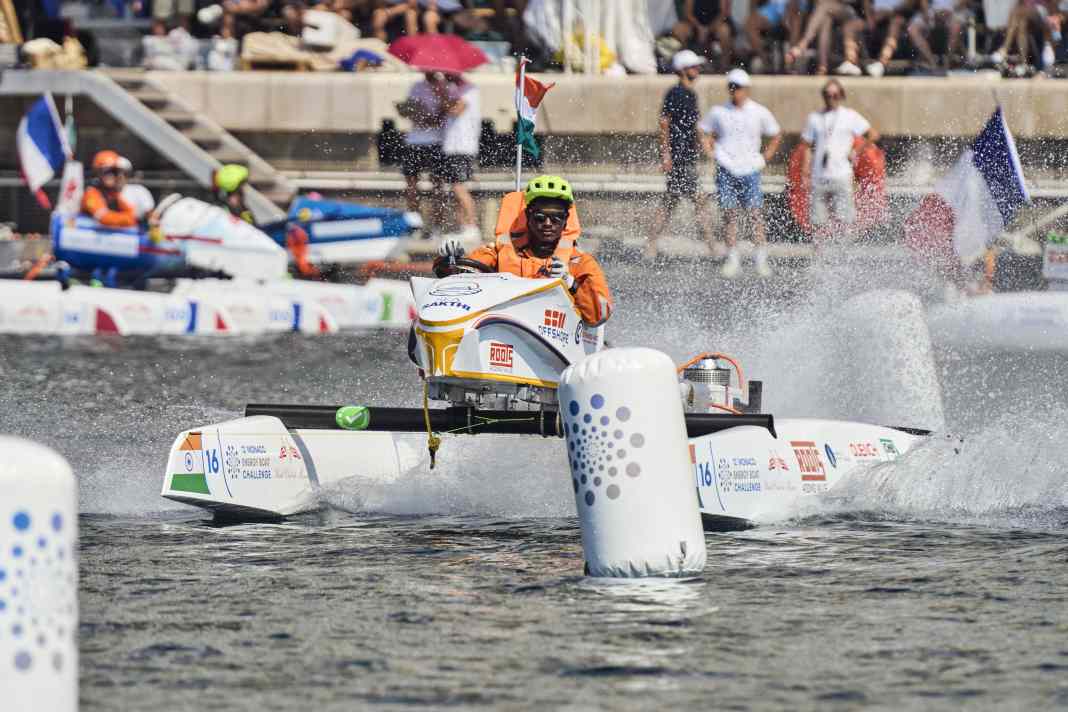Monaco Energy Boat Challenge: The future of shipping






With 42 teams from 20 countries, it wasn't just about speed, but about technology at the limit. History was made in the Energy class in particular: The UniBoAT team from Bologna pulverised the previous record with 26.63 knots. In the Open Sea Class, the Austrian team from Frauscher Boats went one better with 49.84 knots - an absolute top value that shows what is already possible with clean propulsion.
Four classes, one goal: emission-free on the water
Four competition formats offered space for a wide variety of approaches. From autonomous AI boats (AI Class) and standardised hulls with individual technology (Energy Class) to floating hydrogen laboratories (SeaLab Class) and high-performance prototypes up to 25 metres in length (Open Sea Class) - the range was impressive. Here, academic creativity met industrial experience. And that is precisely what makes this challenge so appealing: The Monaco Energy Boat Challenge is both a stage and a workbench.
Technology trends with depth
Three trends characterised the event: AI is increasingly becoming the control centre on board - it not only controls the course and navigation, but also optimises energy management. When it came to hydrogen, the main focus was on efficient storage - whether in liquid or solid form. Toroidal propellers, which massively reduce underwater noise thanks to their design, received a lot of attention - an aspect that is becoming increasingly important in the ecological debate.
Italian dominance and strong ideas
The UniBoAT team not only secured its fourth win in a row, but also prizes for innovation and design. Sustainability was also honoured: The University of Bologna received the 25,000 euro environmental prize from the Prince Albert II Foundation. The Eco-Design Prize went to the Elettra UniGe team from Genoa.
The floating view of the future: Energy Observer
The Energy Observer catamaran was a real eye-catcher. On a mission for clean energy since 2017, the ship was moored in the harbour during the challenge - open to visitors. On board: solar panels, hydrogen tanks and plenty of pioneering spirit. Those who boarded here were able to experience live how emission-free ocean voyages already work today.
Industry meets young talent
One of the main aims of the challenge was to connect the next generation with the maritime industry. Over 90 job interviews were held at the job forum - directly on the jetties, between spanners and laptops. Companies such as SBM Offshore and the Azimut|Benetti Group contributed technical expertise, while the students scored with fresh ideas.
Conferences with vision
The event was accompanied by two high-calibre conferences. Topics: Cyber security on board, dealing with underwater noise, alternative fuels and the role of AI in navigation. It became particularly clear that technological change not only requires new hardware, but also new ways of thinking - from infrastructure to the digital separation between crew devices and ship networks.
SEA Index®: More than just CO₂
The SEA Index®, a sustainability benchmark for superyachts, has also expanded its focus: in addition to the carbon footprint, it now also looks at local environmental impacts - such as particulate matter and underwater noise. New partnerships with AtmoSud and Bureau Veritas should help to make the effects measurable and comparable.
Do you find the topic just as exciting as we do? Then take a look at the organiser's website. Simply here Click here.
